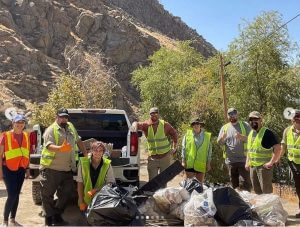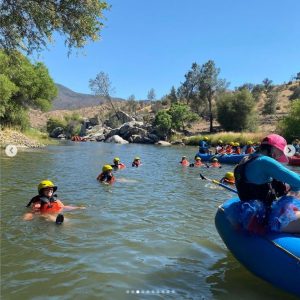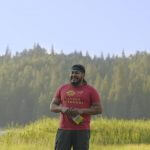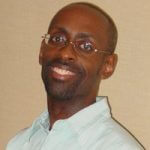Gary Ananian
Gary Ananian started Kern River Conservancy after several years of spending summers on the Kern and discussions with the Forest Service. Having no previous experience in environmental conservation, he used his background in hospitality management in Hollywood’s bar and nightclub industry to generate excitement about the new organization on social media. Gary attended River Rally 2018 and came back with a new vision for the organization. In just one summer, the volunteer force grew from a few dozen to over 600 and support came trickling in from donors, sponsors, and new grants. For the 50 year anniversary of the Wild & Scenic Rivers Act, Gary received recognition from River Network for his work on the Kern. He also received ACA’s River Paddle Hero award. Today, partnerships with government agencies and businesses have grown and Kern River Conservancy has maintained a massive media presence, developing first of its kind PSA videos and building a mobile app giving users and visitors direct access to everything and anything related to responsible public land use and recreation. Over the last decade, the Kern River has turned into a destination hotspot for the nearly 20 million Californian’s who live within a quick 3 hour drive to Sequoia National Forest. Today, over 1.5 million people visit the Kern each year, and with that comes impact. Kern River Conservancy works alongside the U.S. Forest Service teaching Leave No Trace and River Stewardship to the thousands of people recreating on the Kern each summer weekend.
This interview was conducted by Carly Schmidt on November 18, 2021. Learn more about Gary’s work at http://www.kernriverconservancy.org/.
What are your current priorities at Kern River Conservancy and how have they shifted in the last few years?
We’re currently working on some post-fire projects. We’ve had three massive fires in our watershed in the last year that have impacted the Kern River, so we’re doing some water quality monitoring and testing along the most impacted sections. We’re also working with the Forest Service to restore a few of our iconic mountain bike trails after these fires.
When I founded Kern River Conservancy in 2013, we were almost exclusively supporting river cleanups. The Kern River gets anywhere from 1.5 to 2 million visitors a year, mostly from Los Angeles and Bakersfield. As our capacity has grown we’ve been able to do other projects like the trail and restoration work that I mentioned, as well as the water quality monitoring.
What inspired you to found the Kern River Conservancy and when did you start to see this expansion of support and organizational capacity?
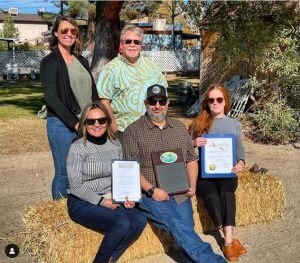
Kern River Conservancy wins Organization of the Year Award from the Kern River Valley Chamber of Commerce.
I had been visiting the Kern River from L.A. for many years and noticed that the conditions were worsening and trash was everywhere. I’ve always been a problem solver so I started reaching out to the Forest Service. I was shocked when they said that there are no resources or conservation groups protecting the Kern River. That was surprising to me because the Kern has a Wild and Scenic River designation. I stayed in contact with the Forest Service and spent my own money to get a bookkeeper and a 501(c)(3) status. The Forest Service knew I was serious then and I started planning cleanups.
It was challenging at first because no one knew me or trusted me in the small town. For the first few years we struggled to get donors and I was still learning about conservation. I don’t have a background in science or ecology, I came from running and managing nightclubs in L.A. I heard about River Rally and actually presented a workshop—Millennial Engagement on Wild and Scenic Rivers—in 2018. River Rally was my first introduction to how conservation actually worked. I was very intimidated to present in front of all these scientists and hydrologists, but it was a great experience. I talked about my knowledge of club promotion and they shared the ins and outs of running a local organization.
What skills from the nightclub industry did you bring to Kern River Conservancy?
Back when we were a new organization and nobody knew who Kern River Conservancy was, we had maybe 700 followers on social media and a few dozen volunteers and I was doing it all wrong. I was imitating other environmental organizations, but posting photos of cleanups wasn’t working for us. I decided to promote the conservancy like it was a club. When I got back from River Rally, that was exactly what I did. I changed the language in our posts, used catchy hashtags, and engagement took off from there. We started attracting visitors through social media and went from 700 followers to 4,000 over that summer to almost 20,000 today with over 1200 volunteers.. I realized that people who are interested in recreating and giving back to our public lands don’t want to see boring scientific facts or political posts, they want to enjoy the outdoors and have fun. We committed to this approach and, over the next year, our volunteer and donor numbers doubled again.
As far as the specifics, we use video and Instagram. We look at what’s trending and use humor to our benefit, which gets some pushback but these posts also generate a lot of interest and new volunteers. It’s a different approach from what I’ve seen from other organizations but it works for us. The reality is that people come to the Kern River to party and we’ve had success leaning into that.
Often partying on a river is usually associated with litter and irresponsible recreating. What is your approach to merging the kind of fun you’re trying to promote with environmental stewardship?
Our river cleanups always include workshops where we teach the volunteers about Leave No Trace, advocacy, and fire prevention. We have a ton of people come out for these volunteer days and workshops because we work hard to keep our messaging politically neutral and more geared towards protecting public lands. We’re really big on digital media so we try to post workshop content on social media channels as well so we can reach a larger audience.
When you talk about your audience, you’re referring to volunteers and recreators from L.A. as well as local supporters in Kernville. How do you manage messaging to two very different audiences?
From my perspective, getting the outsiders here is the easy part. They love to visit this area and when they find out that the Kern River Conservancy is here they want to support us and get involved. There are a ton of campers who plan their trips around our cleanup events. The locals are suspicious of outsiders because, historically, these are the people who create problems. But it’s all about building trust, knowing that the locals will take more convincing that we have positive intentions. We publish brochures in both English and Spanish and listen to the needs of the community.
At River Rally 2018, you presented “Millennial Engagement on Wild and Scenic Rivers”. You also spoke a lot about your engagement strategy in this blog. How has your outreach approach changed in the last 3 years?
We now have a very young audience that comes out for cleanups, usually between the ages of 18 and 35, and they’re mostly Latino and women. Because of that, I’m keeping more of an eye on what’s trending on social media and try to engage more of our audience that way.
Did you expect to get as involved in policy and advocacy as you are now?
Not at all! I thought this was going to be a passion project. I never thought that I would quit my nightclub job then, after River Rally, I had a whole new vision for what I wanted. I realized that if I wanted to make an impact, I had to quit my job in L.A. and move to Kernville, and that was what I did. I had some money saved and I worked odd jobs here and there. Then, finally, I was able to make this my full-time priority. I took a lot from workshops on board development and policy and I moved away from the idea that we’re just going to do cleanups at Kern River Conservancy. After that, I shifted board members around and got involved with the Wild and Scenic Rivers Coalition. Now we’re interested in expanding federal protections for the Kern as well as keeping our community engaged in our work.
What advice would you give to someone who is interested in starting an organization?
The number one piece of advice is patience. This is Kern River Conservancy’s eighth year in operation and this is the first year we’ve hired paid staff. Last year was a great year for us in terms of donations and our biggest volunteer event was actually during the pandemic. We had capped an event but volunteers kept showing up. People came from as far as San Diego and San Francisco. So this is a long-term commitment, so you need to stay passionate.



